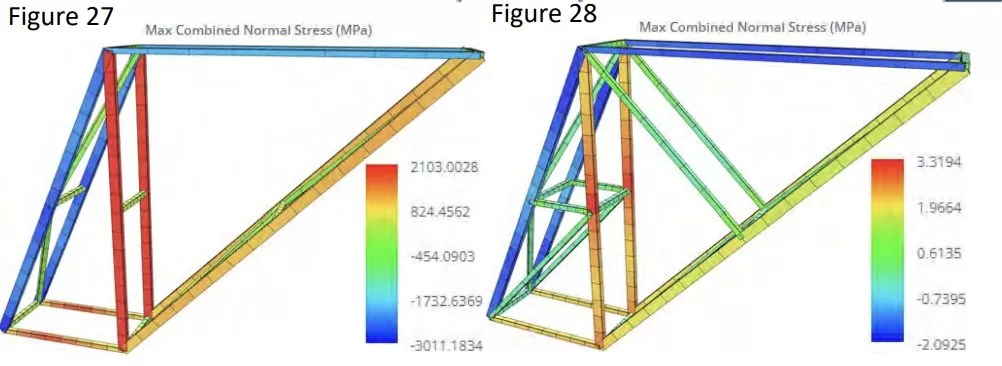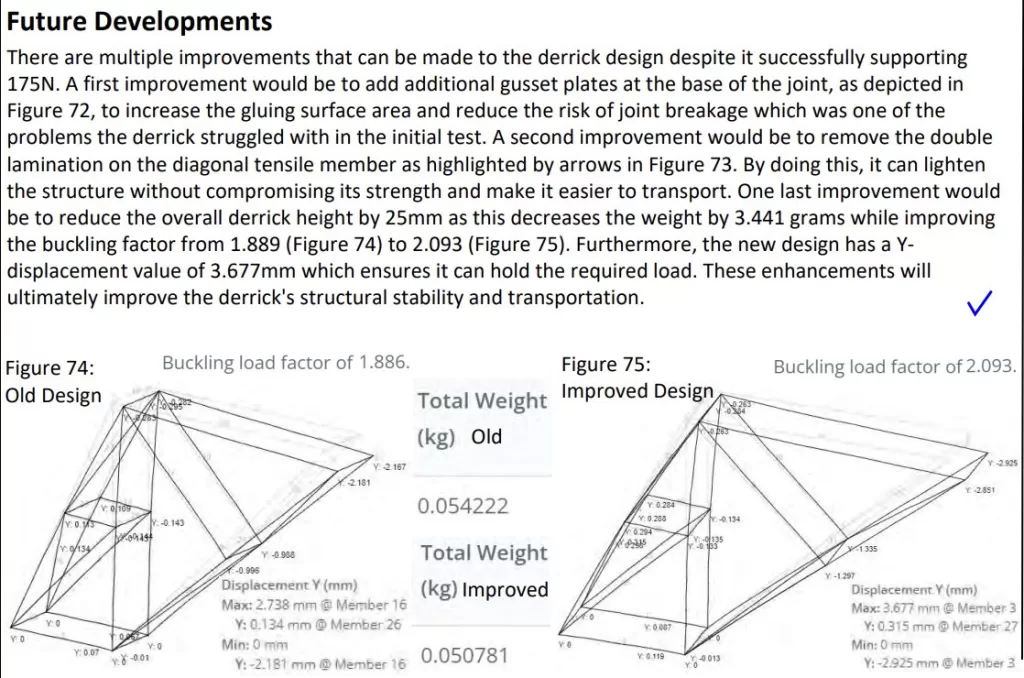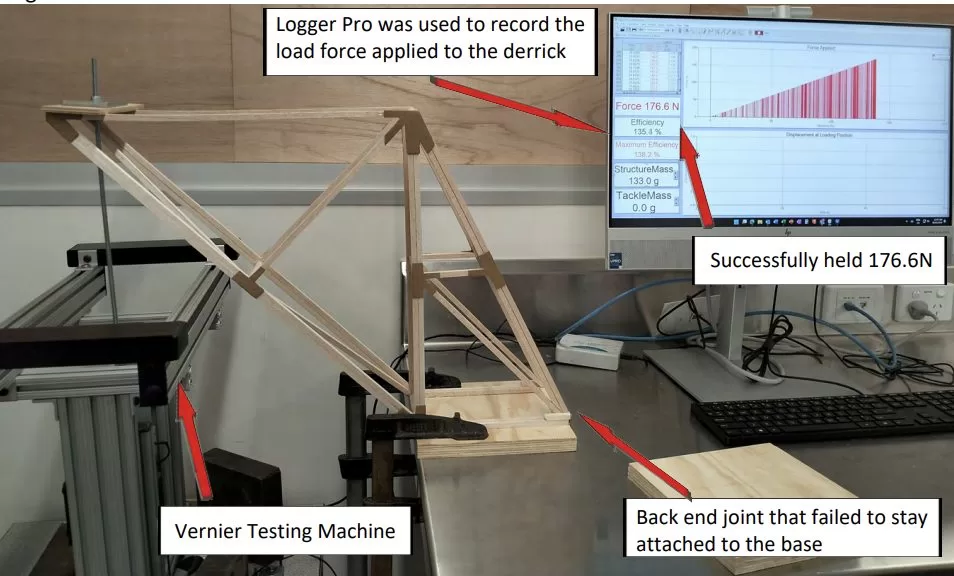Case Study: St Joseph’s College Gregory Terrace
An innovative Engineering program spanning Years 10 to 12 at St Joseph’s College Gregory Terrace in Queensland, Australia has leveraged SkyCiv to enhance its curriculum. The use of SkyCiv’s analysis software has enabled students to gain deep insights into structural design and analysis, resulting in highly detailed project work that aligns closely with physical prototypes. Teacher Damien Hanley, has used SkyCiv for more than 6 years, as both a teaching aid and for the past few years providing access to his classes under an Educational Account.
Learn more about Damien’s classes and how he used SkyCiv in the classroom, with the Q&A case study below:

Please tell us about your projects
We teach Engineering across Years 10 to 12, catering to students aged 15 to 18, through a series of structured projects:
Year 10: Bridge Design
- Objective: Design a bridge using laser-cut plywood to hold the maximum load within specific limitations (span, height, and choice of three cross-sectional areas).
- Process: Students utilize SkyCiv to create and iterate their bridge designs, leveraging the tool’s feedback to refine and optimize their structures.
Year 11: Derrick Crane Design
- Objective: Construct a derrick crane using balsawood members (6.5 x 6.5 mm cross sections) capable of holding a fixed load within set limitations (base width, height of load point).
- Process: SkyCiv aids students in analyzing load distribution and structural integrity, enabling precise adjustments and optimizations to their crane designs.
Year 12: Advanced Bridge Design
- Objective: Develop a bridge from balsawood members to support a fixed load, including a Factor of Safety (FOS), within predefined constraints.
- Process: SkyCiv’s advanced tools provide a high level of detail in the design process, assisting students in achieving designs that perform reliably under testing.
These projects not only develop the students’ technical skills but also enhance their ability to apply theoretical knowledge in practical scenarios, preparing them for further studies and careers in engineering.
What was the SkyCiv learning process like for your students?
The SkyCiv learning process for our students has been highly beneficial. It is an excellent tool that provides detailed feedback promptly, which is essential for effective learning and development. The choice of visuals and data presentation with each design iteration enables students to communicate their progress and findings at a high level.
Our project work requires deep investigative effort and a strong emphasis on synthesizing information to predict relevant solutions. SkyCiv’s ability to generate extensive data from various iterations allows students to demonstrate their knowledge and the application of this knowledge effectively. A notable highlight is the close alignment between our virtual models and the prototypes tested, which reinforces and encourages students to delve deeply into their initial design work.
I believe that the level of detail and feedback SkyCiv provides significantly enhances the quality of our project work.

St Joseph’s College Students also made insightful suggestions for improvements to their own designs – showing a great deal of engineering knowledge and critical thinking
What did you and the students like the most about SkyCiv?
SkyCiv offers several features that both the students and I find highly valuable. The user interface is intuitive and allows for quick changes, providing instant, detailed feedback, which is crucial for iterative design processes. Additionally, the ability to easily export designs in .dxf format to Fusion 360 is an excellent feature. This compatibility facilitates our workflow, especially when laser cutting plywood models and creating orthographic drawings for balsawood prototypes.
This hands-on process is enjoyed by the students as it provides a direct understanding of the importance of building accurate prototypes to match their virtual designs. Using SkyCiv, the students have been able to develop sophisticated ideas aimed at reducing axial forces and displacement, ensuring stress values align with material properties, and confirming that the final designs have a buckling factor greater than one. The quality of work produced using SkyCiv has been impressive, showcasing their ability to apply theoretical knowledge to practical applications.
How well did the physical results match the simulated results?
The physical prototypes closely matched the simulated results. When constructed with precision, the prototypes consistently align with the simulations. We emphasize joint design in our balsawood models, ensuring that joints are appropriately designed, and compression members effectively lock in tension members. Additionally, the use of gusset plates made from cardboard or balsawood sheets further ensures that the physical models accurately reflect the virtual designs. This meticulous approach to construction and joint design has proven effective in achieving a high degree of correlation between the simulated and physical outcomes.

Students performed physical testing of their structures to compare results to their structural analysis results using SkyCiv.
Were there any features that stood out?
SkyCiv offers several standout features that have significantly enhanced our workflow and project outcomes. The ability to use a spreadsheet to speed up processes and make edits efficiently is particularly valuable. Additionally, the camera tool is excellent for capturing and documenting edits made to student design work, facilitating effective communication of their design development, which is a critical aspect of our projects.
We consistently use several essential tools within SkyCiv, including those for analyzing axial forces, displacement, stress, and buckling factors. The 3D render tool is also invaluable for visualizing laminations of members. This year, the stress analysis tool has been a particular highlight, especially after incorporating it into our Year 10 projects. Providing students with a specific yield stress value to meet for tension and compression members has given them a concrete point of reference and greatly enhanced their understanding. Based on this success, I plan to incorporate this feature across all future projects.
SkyCiv Education
To learn more about SkyCiv Education Accounts, please contact us at [email protected] and we will be happy to help support your Educational needs.


